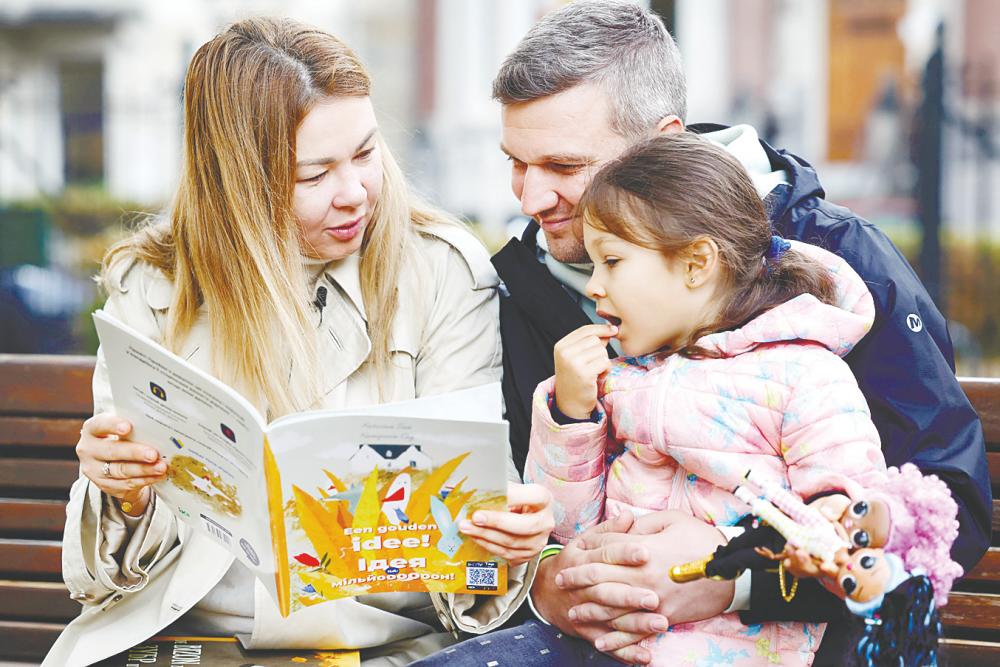DO you still remember the bedtime stories your parents used to tell when you were little? Perhaps it was the crafty big bad wolf masquerading as your grandma?
Or maybe it was the magical seed that sprouted up to the sky, where an evil giant lived, and ate those who dared to explore his castle?
How about the tale of a girl, who, with the help of a fairy godmother, transformed her life of hardship to find her prince and live happily ever after?
We all love listening to stories, whether fairy tales, adventures or other genres. These stories do more than entertain, they inspire us to dream, create heroes to fight for justice, and teach us to steer clear of the path of villains.
Connecting across generations
A child’s emotional and cognitive development thrives on love, security and meaningful interactions, with storytelling being one of the most powerful tools parents can use to foster these bonds.
Studies have shown that children who engage in regular storytelling with their parents or guardians exhibit better language skills, enhanced creativity and stronger emotional connections.
Our elders, having navigated numerous life challenges, are reservoirs of wisdom that can guide the younger generation through similar trials. Storytelling allows them to share personal experiences, turning abstract advice into relatable, lived experiences.
For example, a grandmother sharing her story of perseverance during a difficult time can provide invaluable lessons of resilience and hope to her grandchildren. This connection is not merely nostalgic, it has tangible benefits.
A study conducted by Emory University in 2020 found that children who know more about their family history, often shared through stories, have higher self-esteem, a greater sense of control over their lives and a stronger sense of family cohesion. These benefits are crucial in today’s rapidly changing world, where generational gaps can lead to misunderstandings and disconnects.
The importance of preserving storytelling within families becomes even more apparent when considering the societal challenge of ageism. By engaging in storytelling, older adults can actively combat stereotypes associated with ageing, fostering mutual respect and understanding. This intergenerational exchange not only enriches the lives of the storyteller and the listener but also helps to create a more inclusive society.
As a grandfather, I cherish the memories of reading to my children and eagerly anticipate sharing “grandfather stories” with my grandchildren.
These stories, filled with life lessons, humour and wisdom, are my way of ensuring that the connection between generations remains strong. I hope these tales will leave a lasting impression, not just on my grandchildren but also on their children and future generations.
Shift in storytelling
Over time, storytelling has taken on various forms. Imagination and creativity have turned stories into movies and musicals.
Today, films are the most popular form of storytelling, with children and adults eagerly anticipating new releases in the movies and streaming services.
Even classic movies such as The Sound of Music continue to resonate, telling the real-life story of the Von Trapp family who fled their homeland during World War II.
However, the rise of technology has changed how we tell stories. Social media platforms like Instagram, Facebook, Twitter and TikTok allow everyone to share their “stories” with the world.
Yet, the convenience of storytelling through artificial intelligence and chatbots like ChatGPT, Claude and Jenni, is leading to the loss of the human touch. These tools can generate bedtime stories and social media posts in an instant but they lack the personal connection that comes with traditional storytelling.
Importance of human connection
In our increasingly digital world, the essence of human connection is at risk of being overshadowed by the convenience and immediacy of technology.
While technology has undoubtedly transformed the way we communicate, it has also created a paradox: We are more connected than ever, yet often feel more isolated. A 2020 study by the Pew Research Centre found that while 81% of adults in the US use social media, nearly half of them (46%) admit that these platforms make them feel more lonely rather than more connected. This statistic highlights a growing concern about the quality of our interactions in the digital age.
Human connection is more than just communication, it is about empathy, understanding and the shared experience of being together.
Consider the impact of face-to-face storytelling in building and nurturing these connections. Unlike digital interactions, which are often fleeting and superficial, storytelling allows us to engage with others on a deeper emotional level.
For example, when a parent shares a personal story with his child, it is not just the narrative that matters, it is the shared emotion, eye contact and comforting tone of voice. These elements create a bond that transcends the story itself.
The most profound connections are forged through shared human experiences, even in a world increasingly dominated by digital interactions.
Storytelling, with its capacity to convey emotion, builds empathy and creates lasting bonds, and remains one of the most powerful tools we have to maintain these connections.
By preserving the art of storytelling, we ensure that the richness of human interaction is not lost to the convenience of technology.
The writer is an emeritus professor of Biomedical Imaging at the Faculty of Medicine, Universiti Malaya. A 2020 Merdeka Award recipient, he is a medical physicist by training. Comments: letters@thesundaily.com









